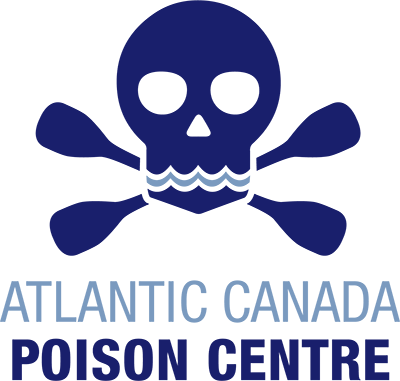
Atlantic Canada Poison Centre
Antidote Kit Manual
Methylene Blue
ALERT: Serotonin Syndrome may occur in certain patients. See Hazards of Administration section for details.
Indications
- For the treatment of symptomatic methemoglobinemia (usually with methemoglobin levels greater than 20%).
- Has been used to treat vasodilatory shock unresponsive to conventional therapy.
Dosage
NEONATE: (0- 4 weeks)
IV Direct: 0.3 - 1 mg/kg
INFANT/CHILDREN:
IV Direct: 1 - 2 mg/kg. Dose may be repeated in 1 hour if necessary and every 4 hours thereafter as required.
- Maximum cumulative dose: 7 mg/kg.
Administration
- IV Direct: Administer undiluted over 5 minutes.
- Monitor hemoglobin and methemoglobin levels.
Compatibility, Stability
- Compatible with dextrose 5% in water (D5W).
Potential Hazards of Administration
- Serotonin toxicity/serotonin syndrome has been reported when methylene blue was administered intravenously in patients also receiving other drugs with serotonin reuptake inhibition properties. If drugs with serotonin reuptake inhibition properties are being taken, careful consideration needs to be given to stop them before methylene blue injectable use, to allow a washout period equivalent to at least 4 - 5 half-lives. In acute methemoglobinemia the risk of not treating the patient must be weighed against the possibility of the development of serotonin syndrome. Consult the IWK Regional Poison Centre as necessary.
- Can cause formation of methemoglobin if administered too rapidly or in excess dose.
- Diaphoresis, hypotension, hypertension, cyanosis, dizziness, headache, confusion, bladder irritation, dysuria, abdominal pain, diarrhea, nausea, vomiting, hyperreflexia, vision changes, tissue necrosis.
- Imparts a blue-green colour to urine and sometimes to feces.
- The dye stains skin. May be removed with hypochlorite (bleach) solution.
- There are reports of the development of Heinz body hemolytic anemia in young infants without glucose-6-phosphate dehydrogenase (G6PD) deficiency who had received doses of methylene blue as low as 4 mg/kg.
Miscellaneous
- Use in caution in patients with G6PD deficiency.
- May cause hemolysis.
- Use with caution in patients with renal failure as methylene blue is primarily excreted renally. Use minimum effective dose to treat symptomatic methemoglobinemia.
- In adults, has been used as adjunctive therapy in refractory vasodilatory shock
References…
Bailey, B., Blais, R., Gaudreault, P., Gosselin, S., & Laliberte, M. (2009). Antidotes en toxicologie d'urgence (3rd ed.). Quebec, Canada: Centre antipoison du Quebec.
Borron, S. W., Bronstein, A. C., Fernandez, M. C., & et all. (2014). Walter F. G. (Ed.), AHLS advanced hazmat life support, provider manual (4th ed.). Tucson, Arizona: The University of Arizona College of Medicine.
Dumbarton, T. C., Minor, S., & Yeung, C. K. (2011). Prolonged methylene blue infusion in refractory septic shock: A case report. Canadian Journal Anesthesiology, 58, 401-405.
Goldfrank, L. R., Nelson, L. S., Lewin, N. A., Howland, M. A., Hoffman, R. S., (2015). Goldfrank's toxicologic emergencies(Tenth ed.). New York: McGraw Hill.
Health Canada. (February 2011). In Notice to Hospitals (Ed.), Association of serotonin toxicity with methylene blue injectable in combination with serotonin reuptake inhibitors: http://healthycanadians.gc.ca/recall-alert-rappel-avis/hc-sc/2011/14648a-eng.php
Jang, D. H., Lewis, S. N., & Hoffman, R. S. (2011). Methylene blue in the treatment of refractory shock from an amlodipine overdose. Annals of Emergency Medicine, 58(6), 565-567.
Masurkar, V. A., Edstein, M. D., Gorton, C. J., & Anstey, C. M. (2011). Acute dapsone overdose: The effects of continuous veno-venous haemofiltration on the elimination of dapsone. Anesthesia and Intensive Care, 39, 1131-1135.
Micromedex, T. H. A. (2014). Micromedex health care systems. Retrieved from http://www.micromedexsolutions.com
Olson, K. R. (2007). Poisoning & drug overdose (Sixth ed.). New York: McGraw Hill.
Shannon, M. W., Borron, S. W., & Burns, M. J. (2007). Haddad and Winchester's clinical management of poisoning and drug overdose (Fourth ed.). Philadelphia: Saunders Elsevier.


